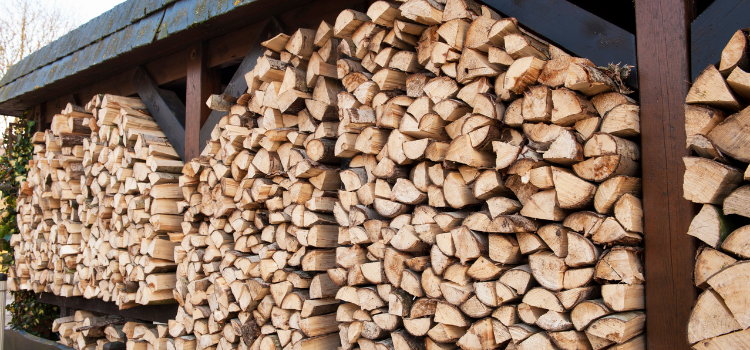Tips for Storing FirewoodPosted: 2020-09-29
So you've successfully taken down a tree, split the logs with your reliable log splitter, and broken it into pieces. Now the question is, how are you going to store it for future use? This article will give you a few practical tips on how to do just that. Winter is just a few weeks away, and this season requires you to run your furnace nearly 24/7. But if you're looking to save some cash, you may want to use firewood from time to time. While there is no guarantee that your firewood stack will be completely free of mouse, snakes, and molds, there are easy ways to keep your pile as clean and orderly as possible. Here are some ideas you might want to consider. Why Store Firewood? When stacking firewood, there are two words to consider: lifespan and safety. Freshly-cut firewood can have about 50 percent retained water, which not only makes it hard to burn but can also cause creosote to build up in your chimney. This substance is poisonous and can catch fire from sparks flying upwards. That's why when you properly store firewood, you're protecting your investment while ensuring your safety. Besides, it took a lot of time and effort to come up with a heap of firewood. Also, properly dried and stored wood is easier to light, burn better, creates fewer emissions, and provides better heat than wet wood. Moreover, storing firewood the right way helps prevent the build-up of rot and fungi. These are some of the reasons to keep dried wood dry and stack them properly. Where to Store Firewood The first thing that may come to mind is to stack firewood in your home — but this doesn't seem right. When you stack a pile of firewood in your home, you're practically inviting pests to come in and putting your property at risk of starting a fire. For this reason, firewood should be stored at least five feet away from your home to ensure enough exposure and sufficient airflow. To prevent any excess moisture from the ground, keep your firewood elevated — using a rack is recommended. The frame will keep the firewood elevated while maintaining good air circulation. If storing your firewood in an elevated position isn't possible, there are other ways to keep the bottom of your stock dry. You can place gravel on the ground under the area where you plan to stack your wood. This technique will enhance drainage, promoting the quicker drying of timber. Another option, you can place your firewood on concrete or a brick. These surfaces do not hold moisture as bare soil does. As much as possible, expose firewood to direct sunlight, which will speed up the drying process. Wood stored under a shade also dries — but longer. How to Store Firewood Now that we've discussed the why and where let's talk about how. Improperly storing your firewood can cause it to rot quicker and even lead to accidents. Therefore, consider these tips: • Avoid stacking wood against your house's outer walls, which increases the risk of fire and damage to the walls. • Avoid storing unnecessary combustible materials in your basement, attic, yard, or workroom. • Storing firewood in your garage isn't a good idea. • Use a tarp to protect your firewood from moisture and rain. • Practice fire safety regulations and follow limits on the amount of solid fuel stored inside the house. • Stack your firewood instead of throwing it in a pile, which will allow for proper air circulation. • Keep your firewood storage away from dogs and play areas. This will keep your firewood stack from becoming a breeding ground for spiders, rodents, and serpents. Storing firewood properly and responsibly ensures your safety. The last thing you'd want is for an accident to take place just because you failed to stack your firewood correctly. So, keep your firewood storage clean and free from clutter. These simple tips are effortless, but they will get the job done and keep the worries away.
| |






.jpg)
